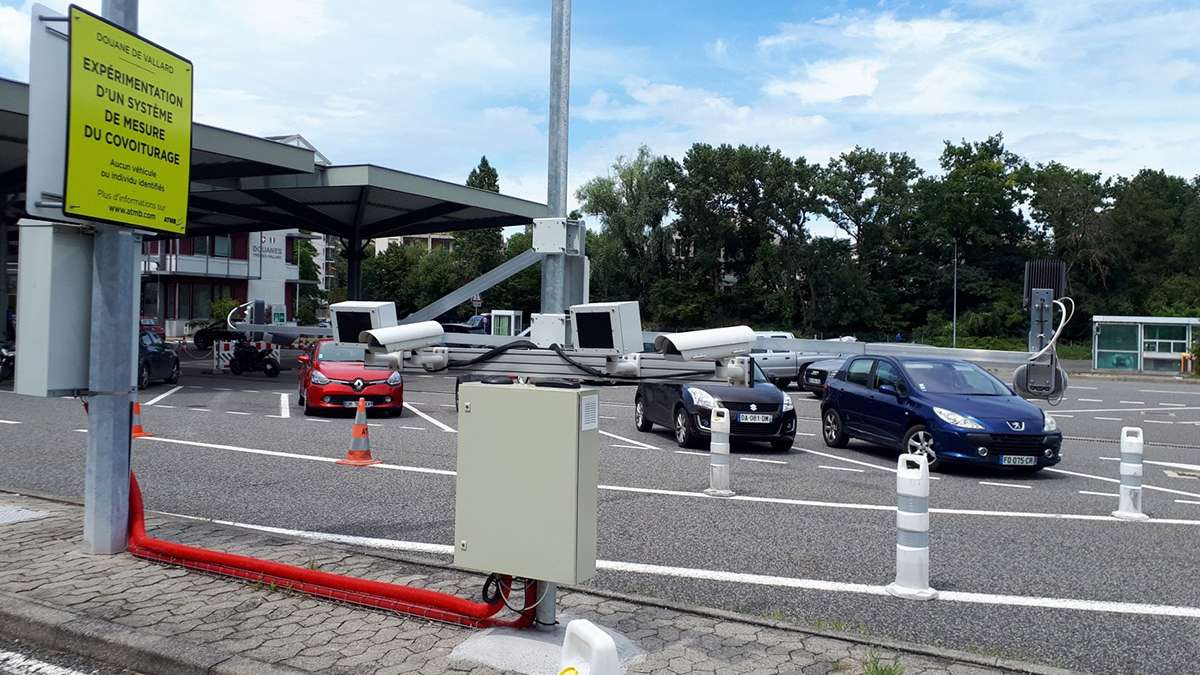ASSESSMENT OF CAR-SHARING MEASUREMENT SENSORS AT THE THÔNEX-VALLARD FRENCH-SWISS CUSTOMS AREA
The partnership between Cerema – which holds Institut Carnot certification for its Clim’adapt project – and ATMB involves assessing the performance of sensors used in a system that counts the number of occupants in vehicles. These sensors will be the first building block in a system for automatically checking a high-occupancy vehicle lane.

The need
The company ATMB manages 130 km of alpine motorways and tunnels, including the Geneva bypass which carries an average of 50,000 vehicles per day. In order to optimise passenger transit at the French-Swiss border location Thônex-Vallard, and promote car-sharing at the same time, ATMB liaised with the Swiss authorities to set up a car-sharing lane in October 2018. In the case of a reserved lane for car-sharing, it is essential to be able to measure the number of vehicle occupants in order to deter fraudsters and ensure positive results: reduced transfer time, and improved traffic flow for the passengers permitted to use the lane.
With this in mind, ATMB needed to know how effectively automatic systems count the people in vehicles, and asked Cerema to evaluate two systems.
The partnership
The proposed project requires a new design as regards developing and positioning car-sharing sensors. ATMB selected two companies offering such systems, and drew up a contract with Cerema to assess their performances.
In the context of introducing car-sharing lanes at entry points to built-up areas in France, this research aims to optimise the performance of car-sharing sensors by checking as many vehicles as possible, while minimising false detections of rule-breaking. The next step in the short term is to test a series of sensors as they automatically check vehicles driving in a car-sharing lane.
The innovation
To evaluate the sensors, Cerema developed a unique methodology featuring indicators that precisely measure the systems' effectiveness. Unlike in previous experiments, mainly conducted in North America, the methodology factors in every vehicle that passes in front of the system, in the varying real-life conditions that may be encountered: brightness, weather effects, different vehicle types, etc. As such, it is positioned with a view to checking vehicles automatically as they use a car-sharing lane in all possible scenarios.
A later stage could involve testing the complete chain of devices used at the Thônex-Vallard site for automatically checking a vehicle and its occupants, notably when the system has been optimised to minimise the risk of a vehicle being ticketed incorrectly.

A partnership
 Institut Carnot Clim’adapt is developing partnership-based research, i.e. management of research work conducted by public sector laboratories in partnership with socio-economic players, businesses of all sizes and local authorities, in order to meet their needs.
Institut Carnot Clim’adapt is developing partnership-based research, i.e. management of research work conducted by public sector laboratories in partnership with socio-economic players, businesses of all sizes and local authorities, in order to meet their needs.
By making use of Cerema’s exceptional resources and regional coverage relating to research, engineering, expertise and equipment, Clim’adapt supports its partners to enable them to transition to a resource-efficient, carbon-free, environment-friendly economy, linked to new life styles engendered by digital transition and adaptation to climate change.
Discover Institut Carnot Clim'adapt


